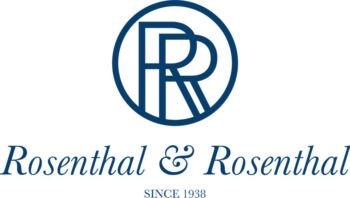The economic uncertainty and inflation pressures that defined 2023 unfortunately do not appear to be dissipating anytime soon. Over the course of last year, we saw major domestic banks, regional banks, and other financial institutions pushing out clients, tightening credit parameters, and making it more difficult to access capital. While we’ve seen and felt that kind of credit crunch before, the impacts this time are still being felt by brands across the food and beverage sector.
Looking ahead in 2024, there have been positive signs that inflation may be cooling and that interest rates may soon begin to drop, but as any businessowner or industry veteran can attest to, we are still operating in an incredibly challenging environment. Finding ways to effectively mitigate risk, diversify sales channels, and manage growth have never been more important and will be the key to surviving—and thriving—in the current climate.
Consumers Are Financially Constrained
The food and beverage sector experienced flatter growth in 2023 than it had in the previous year when we witnessed double-digit growth numbers. That was largely tied to worsening economic conditions last year as well as shifting consumer spending patterns that occurred as a result. According to a July 2023 McKinsey study, two-thirds of consumers reported spending significantly more on groceries in the past two to three months compared to the previous year, with nearly 60% saying that grocery spending represented a significantly higher share of their income. In 2023, we also saw a growing trend among consumers to adapt their buying habits to save money by trading down and prioritizing cost savings over quality, with 66% of consumers seeking out less expensive goods in 2023. This shift was particularly pronounced for consumers with incomes below $100,000 in categories like meat, dairy, and shelf staples, according to McKinsey.
Food & Beverage Companies Facing Increased Competition & Risks
Consumer spending aside, the other big trend we saw last year and that will surely ramp up this year is an increased focused on health and wellness across the food and beverage sector. With more and more products flooding the market, competition has become fierce, and brands are being forced to spend more than in the past to make a splash and get noticed. As big-box retail continues to populate its shelves with next-gen healthier-for-you products, brands that want to jump in the fray will surely need the right mix of credit and financing tools to manage that expansion.
But expanding product lines and diversifying sourcing is never an easy task, especially at a time when geopolitical and global market conditions threaten to disrupt the supply chain. Right now, brands would be smart to consider alternative financing solutions like collection factoring and purchase order financing to help manage risk adequately while also supporting their growth needs. Securing additional working capital for slotting fees and building inventory will also be critical, as well as purchase order financing for companies that may have maxed out their existing line of credit but need to fund a larger order quickly.
Alternative Financing Offers Solutions
Looking ahead, brands will need more than just equity to stay competitive. They will have to rely on asset-based lines of credit to fund inventory needs, payroll, and other working capital expenses that an equity infusion simply won’t cover. The market now demands that companies pivot quickly to meet shifting consumer demand and that they are responsive to retailers’ buying patterns. Brands can also lean on partnerships with factors that can lend against both accounts receivable and inventory. The right lender can help a company dig deep into the inventory mix and structure a flexible inventory facility. A brand that is nimble even when it comes to its own financing can gain a real competitive edge in a crowded market.
Positioning your brand for sustainable, scalable growth is the name of the game. This is the perfect moment to take a hard look at your financing and capitalization strategy and seek out the right tools and resources to take advantage of opportunities as they arise and weather whatever 2024 may bring.
About the Author
Cassie Rosenthal is a third-generation stakeholder and the chief marketing officer of her family’s commercial finance firm, Rosenthal & Rosenthal, which over the past 85+ years has financed countless growing businesses by providing working capital and the resources they needed to be successful. Before this, she co-owned and directed the New York City and Berlin outposts of Goff + Rosenthal art gallery. Her thought leadership has been featured in The Wall Street Journal, The New York Times, WWD, Footwear News, BBC Radio, and CNBC. A native New Yorker, Rosenthal received her BA from Colgate University and holds a master’s degree in art history from the Sotheby’s Institute of Art in London.
About Rosenthal & Rosenthal
With over 85+ years of leadership and industry experience, Rosenthal is now led by the third generation of the Rosenthal family. As a privately held company, Rosenthal is committed to providing personalized service, credit protection and flexible lending to small to middle-market clients across a broad range of industries, with loans ranging from $500,000 to $30MM+. With unmatched financial capacity and decades of experience, Rosenthal is best in class for all its clients’ creative financing needs, including factoring (recourse, non-recourse and international), asset-based lending, purchase order financing and inventory financing. Rosenthal’s team of seasoned commercial finance professionals covers the U.S. from coast to coast and nearly everywhere in between, with dedicated offices in New York, California, Georgia, North Carolina, Colorado and Illinois. Visit the Difference at www.rosenthalinc.com.











